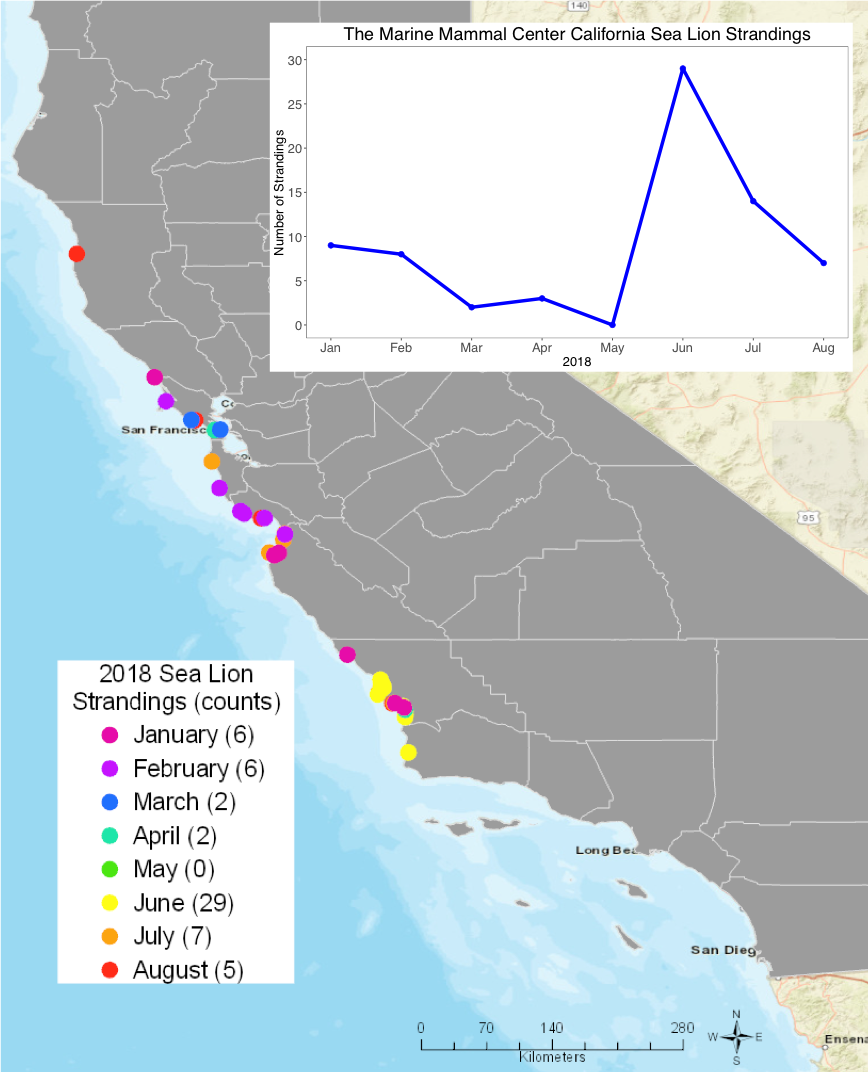The mean (average) probability of a Pseudo-nitzschia bloom for the month of June was high all along the coast with some low offshore probabilities in the Southern California Bight near Orange and San Diego Counties. High nearshore probabilities of a Pseudo-nitzschia bloom were consistent with Harmful Algal Bloom Monitoring and Alert Program (HABMAP) weekly sampling at Stearns Wharf, Cal Poly Pier, and Santa Cruz Wharf in the first half of the month, but not as much with measurements from Newport Beach Pier in Orange County. Santa Cruz Wharf showed high potential for a toxigenic Pseudo-nitzschia (large "seriata" size class) bloom in early June.
C-HARM predicted the highest likelihood of particulate domoic acid (pDA) production in the Southern CA Bight, the offshore region of central CA, and in the offshore zone of most of the central and north coastal regions. Cellular domoic acid (cDA) predictions, which should tell us where Pseudo-nitzschia cells are likely to be most toxic on a per cell basis, were high nearshore north of the Santa Barbara Channel. The North Coast near Humboldt County and the central CA coast near Monterey Bay are regions predicted to have the highest cellular DA concentrations in June. Unfortunately, DA values from the HABMAP sampling are not yet available at any of the pier locations. It may be that the high salinity that has accompanied the record warm temperatures in the Southern California Bight the last two years since the "Blob" is what is driving the high pDA predictions in the region. This is because there is a strong positive relationship between salinity and particulate domoic acid model in the C-HARM pDA model. That relationship is not as strong for the cDA model.
The Alexandrium species (spp.) data collected by HABMAP show moderate Alexandrium spp. cell abundances at the Stearns Wharf in Santa Barbara at two time points in June. A very high level of Alexandrium was observed at Cal Poly Pier on June 11. On June 25, the CDPH lifted health advisories related to sport-harvested bivalve shellfish (whole scallops and all clams) in Santa Barbara, Santa Cruz and Sonoma counties that were in place due to high levels of saxitoxin, the algal toxin produced by some Alexandrium spp. and that is associated with paralytic shellfish poisoning (PSP). Recent testing shows that saxitoxin has decreased to safe or undetectable levels.
Mean Probability of Pseudo-nitzschia Bloom for June 2018
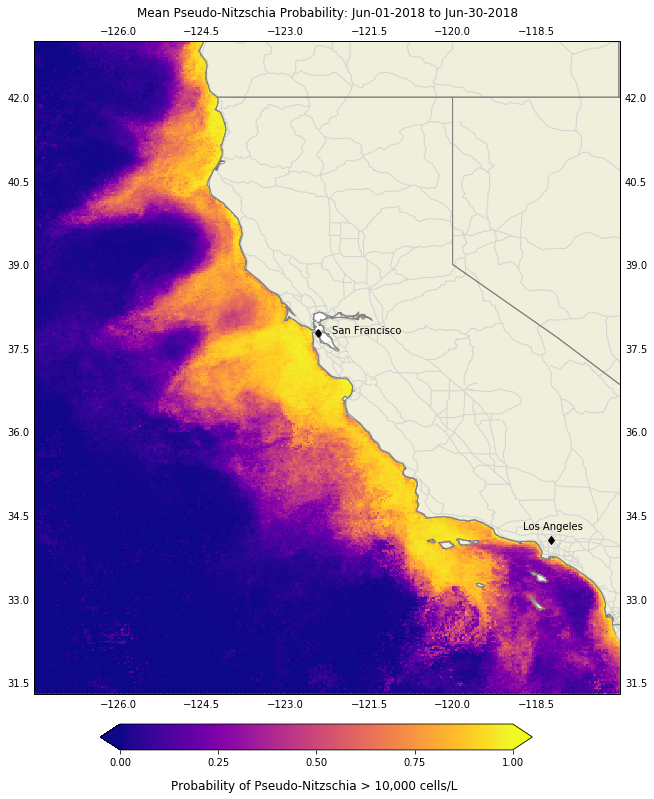
Mean Probability of Particulate Domoic Acid for June 2018
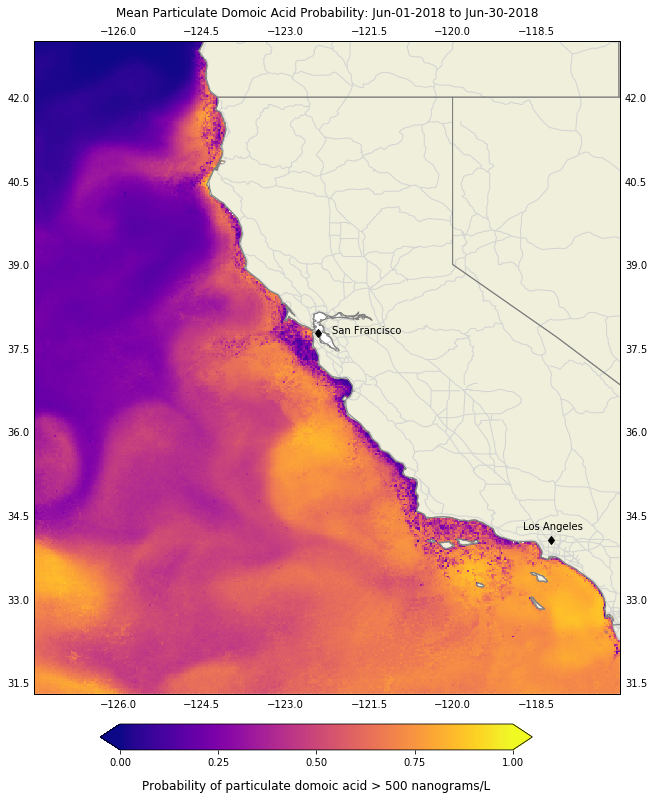
Mean Probability of Cellular Domoic Acid for June 2018
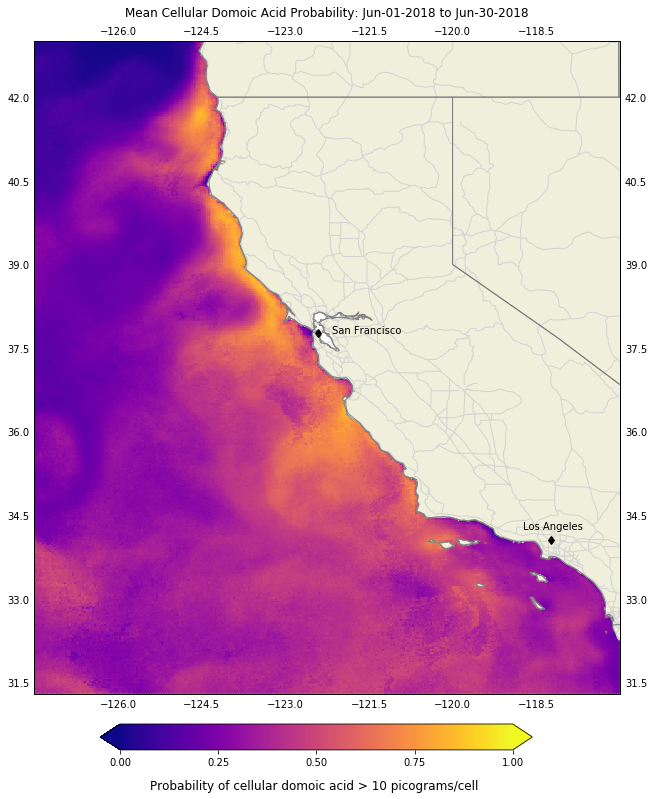
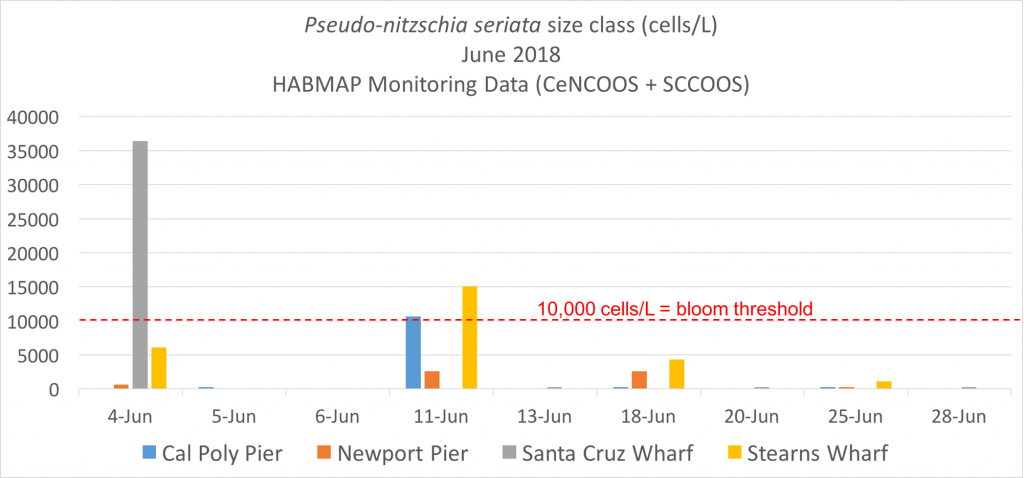
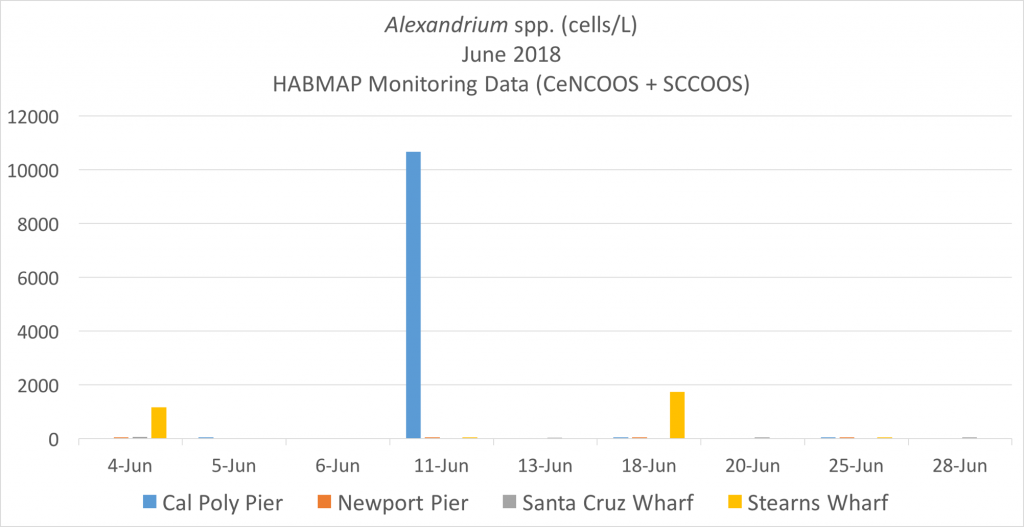
CDPH Pseudo-nitzschia spp. and Alexandrium spp. Observations
Between June 1st and June 30th, 2018 96 samples were collected by volunteers and sent to CDPH for analysis. Pseudo-nitzschia spp. were detected in 61 of the 93 samples. Percent composition of Pseudo-nitzschia was greatest at the San Simeon Pier on June 30th (93%) and at the Morro Bay Pier on June 28th (61%). Alexandrium spp. were detected at 0.5% composition at three of the 62 sites sampled. You can also view CDPH weekly map layers of Pseudo-nitzschia and Alexandrium here.
Data are provided by the California Department of Public Health, Environmental Management Branch.
June 1st - 30th 2018
Pseudo-nitzschia spp. Percent Composition
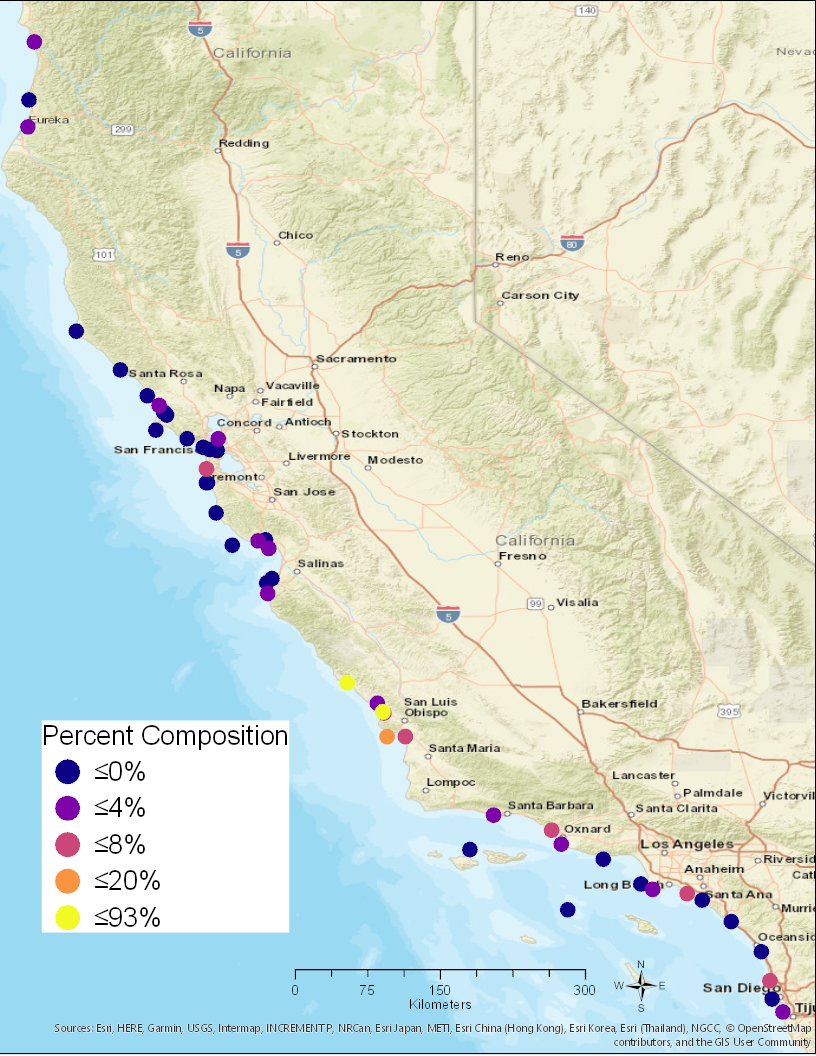
June 1st - 30th 2018
Alexandrium spp. Percent Composition
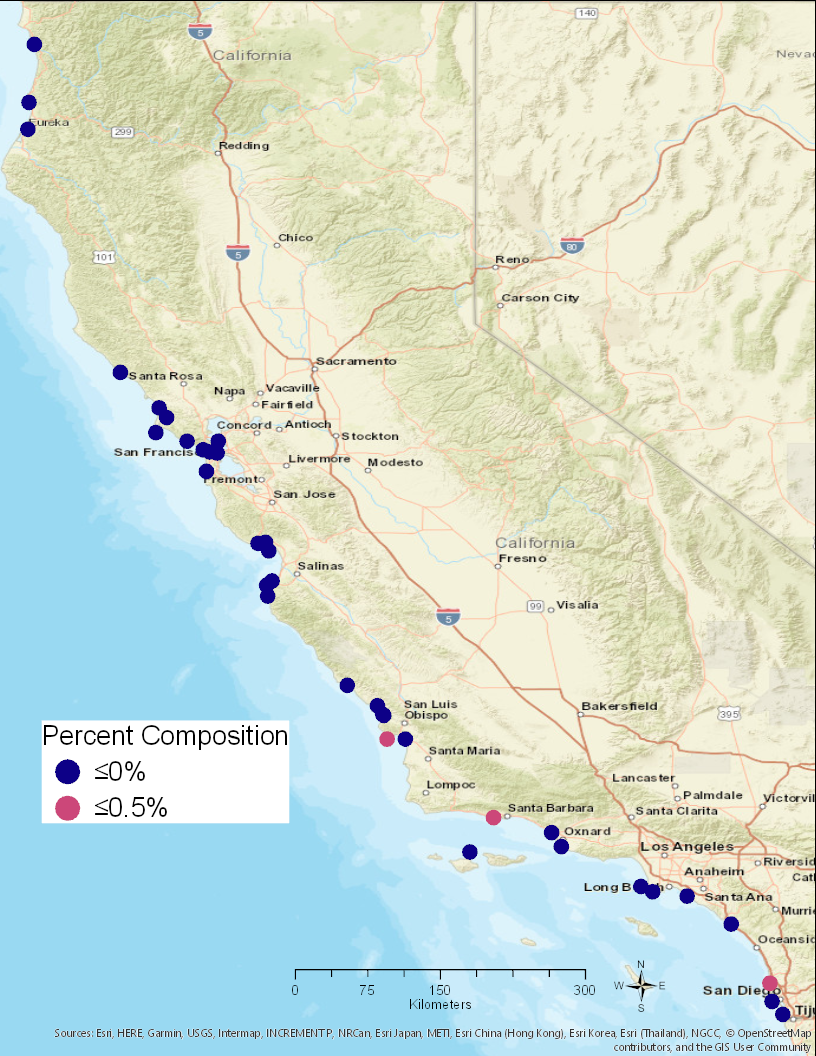
Central California Sea Lion Strandings from DA Toxicosis
The Marine Mammal Center in Sausalito, CA acts similar to an emergency room by working to rescue and rehabilitate sick and injured marine mammals, primarily California sea lions (Zalophus californianus). There have been a total of 72sea lion strandings presented with domoic acid toxicosis since January 2018 with a peak of 29 sea lion strandings in the month of June.
No DA toxicosis cases have been reported by the Pacific Marine Mammal Center in 2018.
